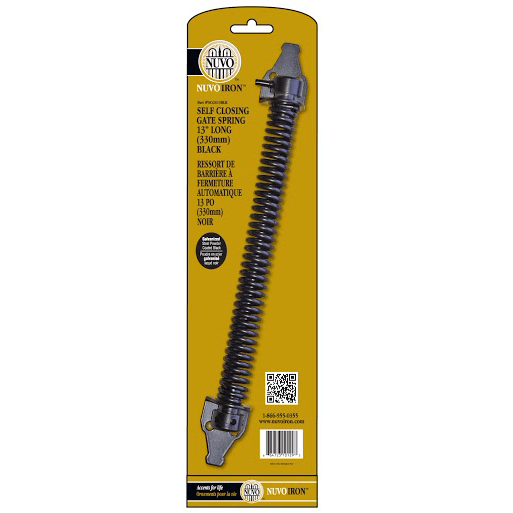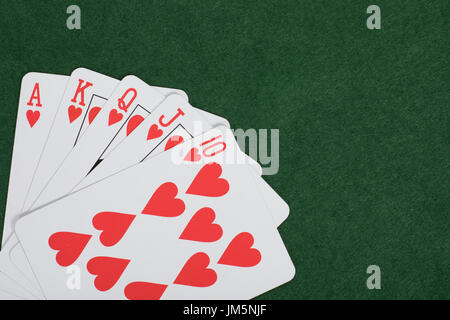Poker Round The Corner Straight
Non-standard poker hands are hands which are not recognized by official poker rules but are made by house rules. Non-standard hands usually appear in games using wild cards or bugs. Other terms for nonstandard hands are special hands or freak hands. Because the hands are defined by house rules, the composition and ranking of these hands is subject to variation. Any player participating in a game with non-standard hands should be sure to determine the exact rules of the game before play begins.
I am studying probability at the moment, and find myself often having to deal with calculating the probability of poker hands, and thus have to be crystal clear on the definition of poker hands. A straight is supposed to be any sequence of 5 cards. However, the following hands are excluded from being considered straights: K, A, 2, 3, 4; Q, K, A. In poker, a 'straight' occurs when you have five consecutive cards of any suit. For instance - let's say that you are playing No Limit Hold'em. You are dealt 6h-7s in the BB and check when the unraised action gets around to you. The flop comes 8h-9s-10h, which gives you the 10-high straight (your two cards create the 6-7-8-9-10 straight). What is Wrap Around Straight in Poker? A wrap around straight is a straight that has an Ace somewhere in the middle of its structure, for example; QKA23. Wrap around straights are not legal hands according to the classic hand rankings system. However, they may sometimes be allowed in home games and some of the more exotic variants of poker.
Types[edit]
The usual hierarchy of poker hands from highest to lowest runs as follows (standard poker hands are in italics):
- Royal Flush: SeeStraight Flush.
- Skeet flush: The same cards as a skeet (see below) but all in the same suit.
- Straight flush: The highest straight flush, A-K-Q-J-10 suited, is also called a royal flush. When wild cards are used, a wild card becomes whichever card is necessary to complete the straight flush, or the higher of the two cards that can complete an open-ended straight flush. For example, in the hand 10♠ 9♠ (Wild) 7♠ 6♠, it becomes the 8♠, and in the hand (Wild) Q♦ J♦ 10♦ 9♦, it plays as the K♦ (even though the 8♦ would also make a straight flush).
- Four of a kind: Between two equal sets of four of a kind (possible in wild card and community card poker games or with multiple or extended decks), the kicker determines the winner.
- Big bobtail: A four card straight flush (four cards of the same suit in consecutive order).
- Flush: When wild cards are used, a wild card contained in a flush is considered to be of the highest rank not already present in the hand. For example, in the hand (Wild) 10♥ 8♥ 5♥ 4♥, the wild card plays as the A♥, but in the hand A♣ K♣ (Wild) 9♣ 6♣, it plays as the Q♣. (As noted above, if a wild card would complete a straight flush, it will play as the card that would make the highest possible hand.) A variation is the double-ace flush rule, in which a wild card in a flush always plays as an ace, even if one is already present (unless the wild card would complete a straight flush). In such a game, the hand A♠ (Wild) 9♠ 5♠ 2♠ would defeat A♦ K♦ Q♦ 10♦ 8♦ (the wild card playing as an imaginary second A♠), whereas by the standard rules it would lose (because even with the wild card playing as a K♠, the latter hand's Q♦ outranks the former's 9♠).
/cdn.vox-cdn.com/uploads/chorus_asset/file/19493203/game_table_xl.jpg)
- Straight Flush House: Same as Flush House (see below), but all cards are in consecutive order.
- Big cat: See cats and dogs below.
- Little cat: See cats and dogs below.
- Big dog: See cats and dogs below.
- Little dog: See cats and dogs below.
- Straight: When wild cards are used, the wild card becomes whichever rank is necessary to complete the straight. If two different ranks would complete a straight, it becomes the higher. For example, in the hand J♦ 10♠ 9♣ (Wild) 7♠, the wild card plays as an 8 (of any suit; it doesn't matter). In the hand (Wild) 6♥ 5♦ 4♥ 3♦, it plays as a 7 (even though a 2 would also make a straight).
- Wrap-around straight: Also called a round-the-corner straight, consecutive cards including an ace which counts as both the high and low card. (Example Q-K-A-2-3).
- Skip straight: Also called alternate straight, Dutch straight, skipper, or kangaroo straight, Cards are in consecutive order, skipping every second rank (example 3-5-7-9-J).
- Five and dime: 5-low, 10-high, with no pair (example 5-6-7-8-10).[1]
- Skeet: Also called pelter or bracket, a hand with a deuce (2), a 5, and a 9, plus two other un-paired cards lower than 9 (example 2-4-5-6-9).[2]
- Little bobtail: A three card straight flush (three cards of the same suit in consecutive order).
- Flash: One card of each suit plus a joker.
- Blaze: Also called blazer, all cards are jacks, queens, and/or kings.
- Bobtail flush: Also called four flush, Four cards of the same suit.
- Flush house: Three cards of one suit and two cards of another.
- Bobtail straight: Also called four straight, four cards in consecutive order.
Some poker games are played with a deck that has been stripped of certain cards, usually low-ranking ones. For example, the Australian game of Manila uses a 32-card deck in which all cards below the rank of 7 are removed, and Mexican Stud removes the 8s, 9s, and 10s. In both of these games, a flush ranks above a full house, because having fewer cards of each suit available makes full houses more common.
Cats and dogs[edit]
Poker Round The Corner Straight Leg
'Cats' (or 'tigers') and 'dogs' are types of no-pair hands defined by their highest and lowest cards. The remaining three cards are kickers. Dogs and cats rank above straights and below Straight Flush houses. Usually, when cats and dogs are played, they are the only unconventional hands allowed.
Poker Round The Corner Straight Talk
- Little dog: Seven high, two low (for example, 7-6-4-3-2). It ranks just above a straight, and below a Straight Flush House or any other cat or dog. In standard poker seven high is the lowest hand possible.
- Big dog: Ace high, nine low (for example, A-K-J-10-9). Ranks above a straight or little dog, and below a Straight Flush House or cat.
- Little cat (or little tiger): Eight high, three low. Ranks above a straight or any dog, but below a Straight Flush House or big cat.
- Big cat (or big tiger): King high, eight low. It ranks just below a Straight Flush House, and above a straight or any other cat or dog.
Some play that dog or cat flushes beat a straight flush, under the reasoning that a plain dog or cat beats a plain straight. This makes the big cat flush the highest hand in the game.
Kilters[edit]
Poker Round The Corner Straight Dance
A Kilter, also called Kelter, is a generic term for a number of different non-standard hands. Depending on house rules, a Kilter may be a Skeet, a Little Cat, a Skip Straight, or some variation of one of these hands.
See also[edit]
References[edit]
- ^1897-1985, Gibson, Walter B. (Walter Brown) (2013-10-23). Hoyle's modern encyclopedia of card games : rules of all the basic games and popular variations. ISBN978-0307486097. OCLC860901380.CS1 maint: numeric names: authors list (link)
- ^Stevens, Michael (November 3, 2018). '15 Poker Hand Names That Will Make You Smile (And Where Those Names Came From)'. gamblingsites.org. Retrieved February 19, 2019.
The order in which Texas Hold’em is dealt is very specific and, assuming you’re playing with a table full of lucid, honest people, never changes. First, you are dealt two hole cards. Then comes the flop, turn and river cards.

The flop
After a round of betting for the hole cards, a card is burned off the top of the deck (meaning discarded without being looked at — this is done in case the top card had somehow been exposed or marked), and three cards are dealt face-up to the center of the table. This is known as the flop and is the start of the community cards on the table — those cards that everyone may incorporate in his hand.

Everyone who has not folded now has a five-card hand — two hole cards combined with the three community cards. A round of betting takes place.

Poker Round The Corner Straight Back
The turn
After the flop betting round, another card is burned from the deck and a fourth community card is exposed. This card is known as the turn (sometimes fourth street).
All players still in the hand now have six cards to choose from to make their best five-card Poker hands. There is another round of betting and one more card yet to be exposed.
The river
A card is burned and the most infamous of community cards, the river (sometimes called fifth street) is dealt. All remaining players have seven cards for selecting their best five-card Poker hand (their two hole cards combined with the five community cards). A round of betting takes place, and the best five-card hand at the table is the winner.
To determine their five-card hand, players may use zero, one, or both of their hole cards in combination with five, four, or three community cards, respectively.
Because a player is required to use at least three community cards to make a hand, there can be no flushes if there are not three cards of the same suit (multiple suits with no flush possibilities based on the current exposed community cards is known as a rainbow). Nor can there be a straight if there aren’t three cards from a five-card sequence (for example, 5-8-9).

Here, George is playing the board and has a king-high heart flush. John is using one hole card for an ace-high flush, but Ringo is the big winner using both hole cards for a straight flush.